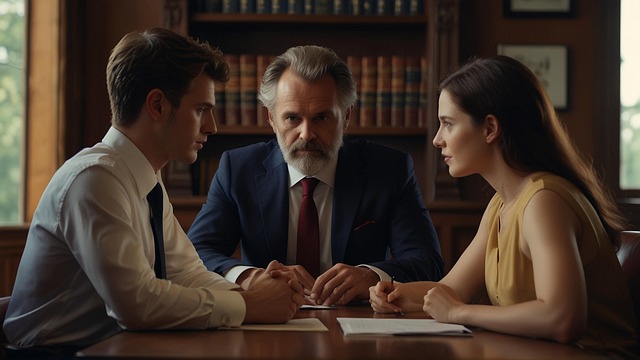Strategic lighting design is essential for law offices, balancing general illumination, task-specific lighting (e.g., reading, writing), and adjustable ambient light in collaborative areas. This approach enhances visual comfort, reduces eye strain, and improves focus, leading to increased productivity among legal professionals and staff. Incorporating natural light and energy-efficient LED options further optimizes the workspace, making it a welcoming and efficient environment for case management and client interactions (law office equipment).
Illumination is key to fostering productivity in any workspace, and a law office is no exception. This article guides you through the process of selecting lighting for your legal practice, ensuring an environment conducive to focus and efficiency. We’ll explore the unique demands of legal work, from document review to court appearances, and how the right lighting can enhance performance. Discover essential considerations, various lighting solutions, and tips on integrating ergonomics and aesthetics for a functional, well-lit workspace tailored to law office equipment.
- Understanding Lighting Needs in a Law Office Environment
- Essential Considerations for Choosing the Right Law Office Equipment Lighting
- Types of Lighting Solutions for Optimal Productivity
- Incorporating Ergonomics and Aesthetics for a Functional Workspace
Understanding Lighting Needs in a Law Office Environment
The lighting in a law office plays a pivotal role in setting the mood and enhancing productivity among professionals and staff. A well-lit workspace is not just about aesthetics; it directly impacts visual comfort, reduces eye strain, and improves overall focus. In this dynamic environment, where legal documents, research materials, and technology converge, appropriate lighting ensures that everyone can work efficiently without any obstructions.
Understanding the diverse needs of a law office involves recognizing various activities taking place within its walls. From meetings and conferences to individual research and document review, each task demands specific lighting conditions. Adequate overhead lighting for general spaces, task-specific lighting for reading and writing, and adjustable lighting options for collaborative areas are essential components of a productive law office setup. Incorporating these considerations into the lighting design allows for flexibility, catering to the varied requirements of legal professionals and promoting an optimal work environment.
Essential Considerations for Choosing the Right Law Office Equipment Lighting
When furnishing a law office, selecting the appropriate lighting is paramount for creating an environment conducive to productivity and focus. The right illumination can significantly impact the ambiance, ensuring attorneys and staff members work in comfort and efficiency. Herein lie several essential considerations to bear in mind when choosing law office equipment lighting.
Firstly, assess the specific tasks that will be performed within the office. Different activities require varying levels of illumination. For instance, reading legal documents demands focused, direct lighting, while collaborative meetings may benefit from softer, ambient lighting. Additionally, consider energy efficiency and cost-effectiveness. Modern LED lighting options offer excellent brightness with reduced power consumption, contributing to long-term savings. Moreover, adjustable lighting systems allow for customization, providing the ideal illumination levels without waste.
Types of Lighting Solutions for Optimal Productivity
In a well-lit law office, optimal productivity can be achieved through strategic lighting solutions tailored to specific work areas. General overhead lighting is essential for providing a balanced and comfortable environment, but it’s often not sufficient on its own. Task lighting, such as table lamps or floor lights, should be incorporated to reduce eye strain and enhance focus during intense legal research or document review. These targeted lighting options ensure that work surfaces are illuminated at the correct intensity, minimizing shadows and glare.
For added flexibility, consider adjustable lighting that allows lawyers and support staff to customize their lighting conditions. This can include adjustable desk lamps or wall-mounted fixtures that can be raised or lowered based on task requirements. Additionally, incorporating natural light through well-positioned windows or skylights can significantly improve mood and productivity levels, making a law office feel more welcoming and less sterile. This blend of general and targeted lighting solutions, combined with natural light, creates an environment conducive to focused work and efficient case management—essential elements for any successful law practice.
Incorporating Ergonomics and Aesthetics for a Functional Workspace
In designing lighting for a productive law office, it’s crucial to strike a balance between ergonomics and aesthetics. Law offices are not just about legal work; they also require a functional workspace that supports concentration and reduces eye strain. Ergonomic considerations should include adjustable desks and chairs, allowing professionals to position their bodies at optimal angles. Proper lighting, such as task lights placed over work areas, ensures clear vision and minimizes fatigue during long hours.
Aesthetically, the space should be inviting and reflect a professional yet comfortable atmosphere. Incorporating natural light through large windows enhances productivity and reduces artificial lighting needs. Additionally, choosing the right color temperature for the lighting—warm tones for relaxation and cooler ones for focus—can significantly impact the overall ambiance. Well-designed law office equipment that marries functionality with style contributes to a positive work environment, fostering both efficiency and client satisfaction.
When equipping a productive law office, lighting is an often-overlooked yet critical component. By understanding the specific needs of this environment—such as task-specific illumination and ergonomic design—and considering various lighting types, you can create a functional workspace that enhances efficiency and caters to the demands of legal professionals. Incorporating the right law office equipment lighting not only boosts productivity but also contributes to a healthier, more comfortable working atmosphere.
